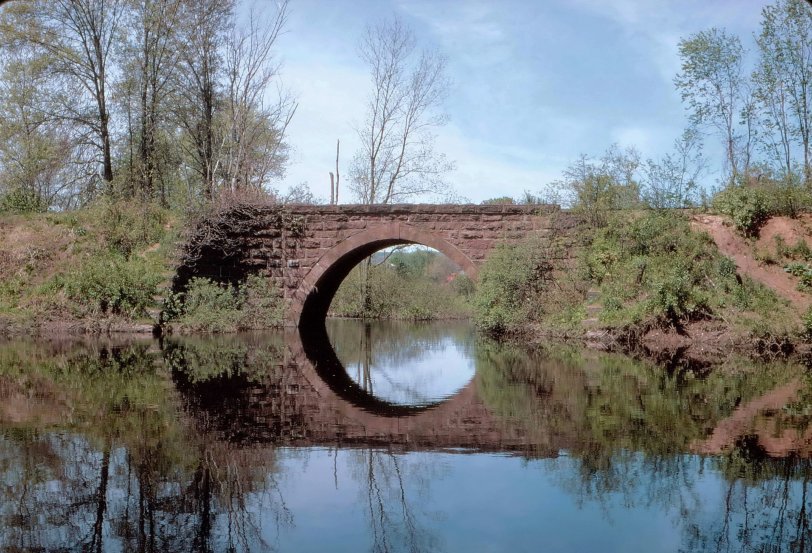


Framed or unframed, desk size to sofa size, printed by us in Arizona and Alabama since 2007. Explore now.
Shorpy is funded by you. Patreon contributors get an ad-free experience.
Learn more.

- Baldwin 62303
- Baldwin VO-1000
- Cold
- No expense spared
- Tough Guys
- Lost in Toyland
- And without gloves
- If I were a blindfolded time traveler
- Smoke Consumer Also Cooks
- Oh that stove!
- Possibly still there?
- What?!?
- $100 Reward
- Freeze Frame
- Texas Flyer wanted
- Just a Year Too Soon
- WWII -- Replacing men with women at the railroad crossing.
- Yes, Icing
- You kids drive me nuts!
- NOT An Easy Job
- I wonder
- Just add window boxes
- Icing Platform?
- Indiana Harbor Belt abides
- Freezing haze
- Corrections (for those who care)
- C&NW at Nelson
- Fallen Flags
- A dangerous job made worse
- Water Stop
Print Emporium
Fallen Arch, Cheshire, CT - 1967

The "Canal Line" railroad, so-called, was constructed in 1847-8 from New Haven, Connecticut to Northampton, Massachusetts to replace the failed Farmington (later New Haven - Northampton) Canal, running over roughly the same course as the canal. The brownstone arch spans the Tenmile River in Cheshire, Connecticut. In 1987 Interstate 691 was built though this site and the bridge was replaced with a modern banality. Numerous railroads have owned the old line over the years and all rail traffic on this part of the line ceased very soon after its replacement. A rail-trail extension through this area is expected. I took this picture on June 4, 1967 when I was 16. Kodachrome, of course! View full size.
More
I heve recently read that, about 1900, many of the original Canal Line bridges were replaced in order to support heavier trains. It is entirely likely that this was one of the new bridges. The heavy brownstone blocks come from quarries in Portland, Conn., alongside the Connecticut River about 14 miles to the east, from where they can be barged down-stream to Brooklyn, Boston and beyond, for its popular use in the facades of 19th Century town-houses. It would have been (relatively) easy to bring them to New Haven, and straight up the existing rails.
About 17,000 years ago, as the glaciers melted back, the Tenmile being a tributary of the larger Quinnipiac River, which at some point had become naturally dammed, in neighboring Meriden, leaving this whole area long under the waters of large Glacial Lake Southington, into which very great quantities of sand and clay were deposited. The presence of rather yielding materials necessitated the use of many driven pilings underneath the supporting structures of area bridges over these rivers. This would have been a LOT easier to do in 1900 than in 1848. I also suspect that considerable track re-grading may have been done along here, to raise the track above occasional contemporary flooding, as the area is rather flat, and an original Farmington Canal culvert over the Tenmile (1828, also a stone arch bridge) acts as an impediment to rapid draining in the area, as does a 1931 concrete arch bridge below that, three arches in a little more than a mile!
























On Shorpy:
Today’s Top 5